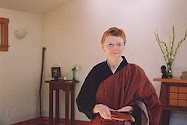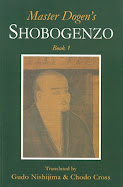 You can find this wonderful view of the English village of Warkworth here.
You can find this wonderful view of the English village of Warkworth here.Ever since I was a little girl, I've wanted to be a witch. Not just the pagan god-loving, earth-hugging, mud-stomping kind, but a real witch-- the broom-riding, hearty-cackling, soulful old crone who steals our imagination every year in the Autumn season.
And I must admit, aside from being able to talk to (and turn into) cats and bats and other furry morsels, the flying was the piece that impressed me the most. For long have I tended toward the quieter side, the reclusive side, so that the thought of experiencing a whole town, all at once the whole of it and in perfect secrecy, thrilled me.
And so it is that Halloween, or more properly the Celtic Samhain, is my favorite holiday of the year, for the celebration of it allows this imaginative soul to indulge in such wonderful play as pretending to be exactly who it is I think I should be, to its fullest expression.
And so I did; and clutching my wide-brimmed hat to my head against the cold evening wind, I drifted through the twilight new-dark of our neighborhood, spooked and spooky alike, powerful as the old crone as I longed to be, and just as stealth, too; for who questions the presence of a flying witch, on Halloween?
 To study the self is to forget the self, and to realize that all that is lives its existence through you; that is my lesson from the greatest shape-shifter of them all, Master Dogen. For truly, we are anything and everything, and nothing at all. When viewed in view of the liminal nature of Samhain, Dogen's teaching breathes the most powerful magic of all: the living truth of an interconnection and inter-weaving so very tight, and constant; an experience of self so expansive and inclusive, all boundaries fall away, so indeed there is nothing to include, and no expanse at all. This truth rings to me as clear as a crisp witch's cackle.
To study the self is to forget the self, and to realize that all that is lives its existence through you; that is my lesson from the greatest shape-shifter of them all, Master Dogen. For truly, we are anything and everything, and nothing at all. When viewed in view of the liminal nature of Samhain, Dogen's teaching breathes the most powerful magic of all: the living truth of an interconnection and inter-weaving so very tight, and constant; an experience of self so expansive and inclusive, all boundaries fall away, so indeed there is nothing to include, and no expanse at all. This truth rings to me as clear as a crisp witch's cackle.Samhain offers a chance for one to look upon the yield of what was harvested over the last several months of effort. The fields are clear, the table is set, and the ancestors themselves are invited to feast with the living on the fruits of their collective labors.
This year, I survey my empty field, and my harvest, and the theme becomes clear: after so much struggle, heartbreak, and chaos, What is this Zen for? What is the purpose of this faith?
My teacher is understanding as I recount my past "successes" in practice, and my present dissatisfactions. She quotes Kodo Sawaki Roshi: Zen is good for nothing. "Wonderful things happen in zazen," she said. "But if we attach to them, life becomes a disappointment.
"If we try to kiss ourselves goodbye-- all those nasty, brutish things that we are, 'goodbye'-- that's just death, the limitation of form, our value judgments. If we attach to the beautiful side, it's harder to cope; it's not realistic. It is what it is. We are part of it. It is us."
I thought I already understood this, but in fact it's not just an understanding, but a bodily sense we must cultivate often, even in the worst of times, when it's hardest. Oh, and how hard it is, when it is hardest!! "But how do you suffer?" I asked her; "How do you cope, when the coping is itself unbearable?" Her answer reminded me of the wise old crone on the broom: cry. curse. out loud. And, sit, a lot, when you're confused, because "you can see a lot more of what's happening," just like that witch, resting easy on the swoosh of her broom, taking in the aerial view.
I told her I'd been attempting to create Home Retreats, but aside from some calm, I didn't find too much success in them. "Retreats are a monastic practice," she reminded me. "Not facing the whole thing at once-- that's the way of the monastery. Trying to duplicate monastic life in the household with a small child isn't realistic.
"Rather, make yourself available to your life, with mindfulness practice, remaining in the center of your life, continually reminding yourself to be where you are, to be with it.
"I don't think we can perfect ourselves; I think the best we can do is try to help each other."
And so it turns out I'm the witch after all: the mom crafting herbal potions to ward away the discomforts of cold weather; the seeker in contemplative, dark garb, settling in the seasonal quiet; the wild woman at once soaring high above, gathering a sense of the 'big picture', yet still fully part of it, adding her own unique expression in concert with everything else. All the more reason to practice the "good for nothing"... All the more reason to embrace, and celebrate, this dark season of the Witch.








